“Farthest galaxy ever” HD1 is probably not what it seems
An exciting potential discovery has recently rocked the world of astrophysics.

Artist’s logarithmic scale conception of the observable universe. The Solar System gives way to the Milky Way, which gives way to nearby galaxies which then give way to the large-scale structure and the hot, dense plasma of the Big Bang at the outskirts. Each line-of-sight that we can observe contains all of these epochs, but the quest for the most distant observed object will not be complete until we’ve mapped out the entire Universe.
This galaxy, HD1, was just announced as the youngest, most distant galaxy ever seen.

Shown here with purple arrows, this tiny red object, barely able to be seen without pointers to it, may represent the most distant object presently known in the Universe: HD1. However, its distance has yet to be definitively determined.
Possessing an age of 330 million years, it’s presently 33 billion light-years away: the farthest ever seen.

The light from any galaxy that was emitted after the start of the hot Big Bang, 13.8 billion years ago, would have reached us by today so long as it’s within about 46.1 billion light-years at present. But the light from the earliest, most distant galaxies will be blocked by intervening matter and redshifted by the expanding Universe. Both represent severe challenges to detection, and pose cautionary tales against us drawing definitive conclusions about their distance without the proper, necessary data.
This could break the old record of GN-z11: 407 million years old and 32 billion light-years distant.

A section of the GOODS-N field, which contains the galaxy GN-z11, the most distant galaxy ever observed. At a redshift of 11.1, a distance of 32.1 billion light-years, and an inferred age of the Universe of 407 million light-years at the time this light was emitted, this is the farthest back we’ve ever seen a luminous object in the Universe. Hubble’s spectroscopic confirmation was key; without it, we should have remained skeptical.
If so, it’s a fascinating find: bright, luminous, and possibly home to the first truly pristine stars.
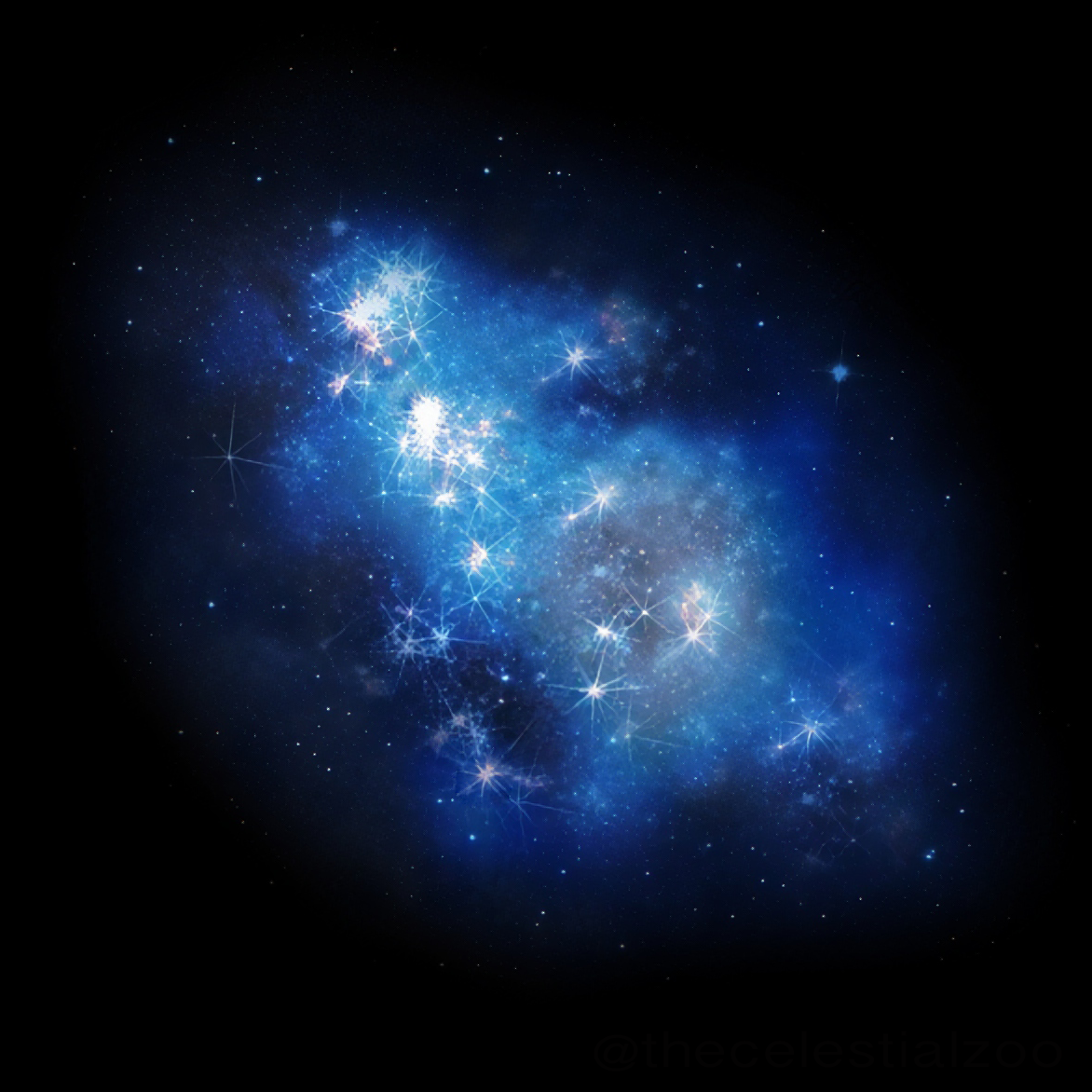
The very first stars and galaxies that form should be home to Population III stars: stars made out of only the elements that first formed during the hot Big Bang, which is 99.999999% hydrogen and helium exclusively. Such a population has never been seen or confirmed, but some are hopeful that HD1 will contain them.
But there’s an excellent chance that HD1 is not the record-breaker it’s widely reported to be.
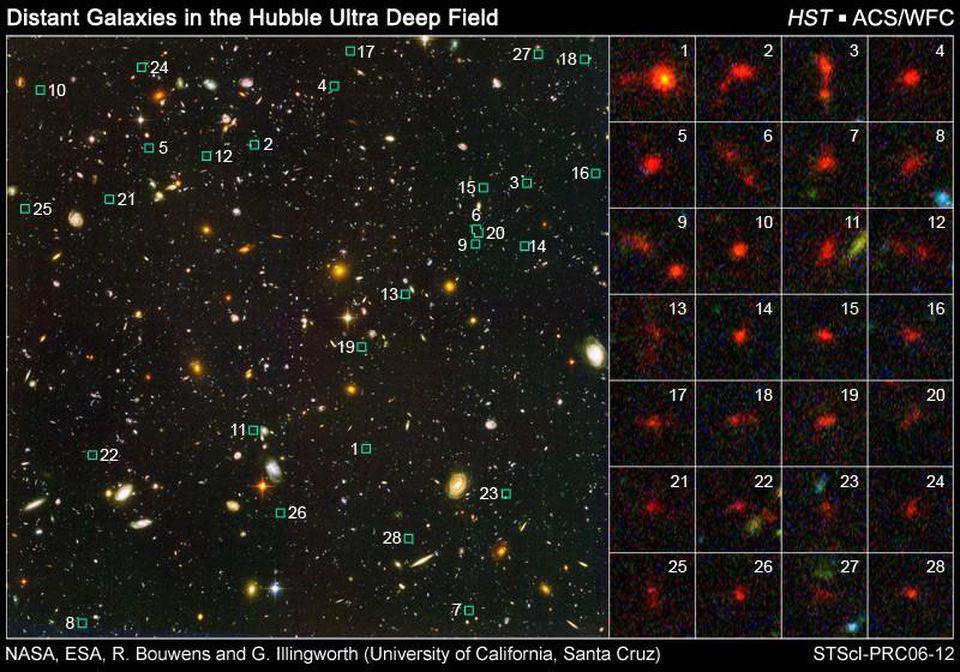
Although there are magnified, ultra-distant, very red and even infrared galaxies like the ones identified here in the Hubble eXtreme Deep Field, many of these candidate galaxies have turned out to be either intrinsically red and/or closer interlopers, not the ultra-distant objects we hoped they were. Without spectroscopic confirmation, fooling ourselves as to an object’s cosmic distance is an unfortunate, but commonplace occurrence.
Yes, it’s extremely red in color, missing all of its short-wavelength light.
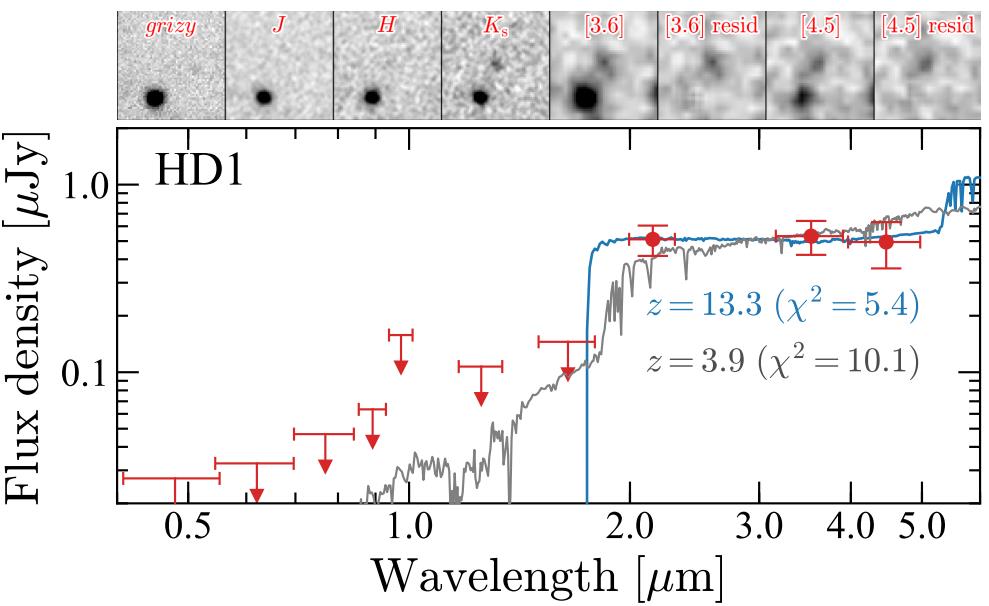
This figure shows various photometric filters (top) and the images of HD1 that they do or do not reveal, as well as two different fits to the photometric data. Note that even though the high-redshift fit is superior, there is no spectroscopic confirmation of the galaxy HD1’s distance at all.
Only the longest-wavelength photometric filters reveal the object at all.
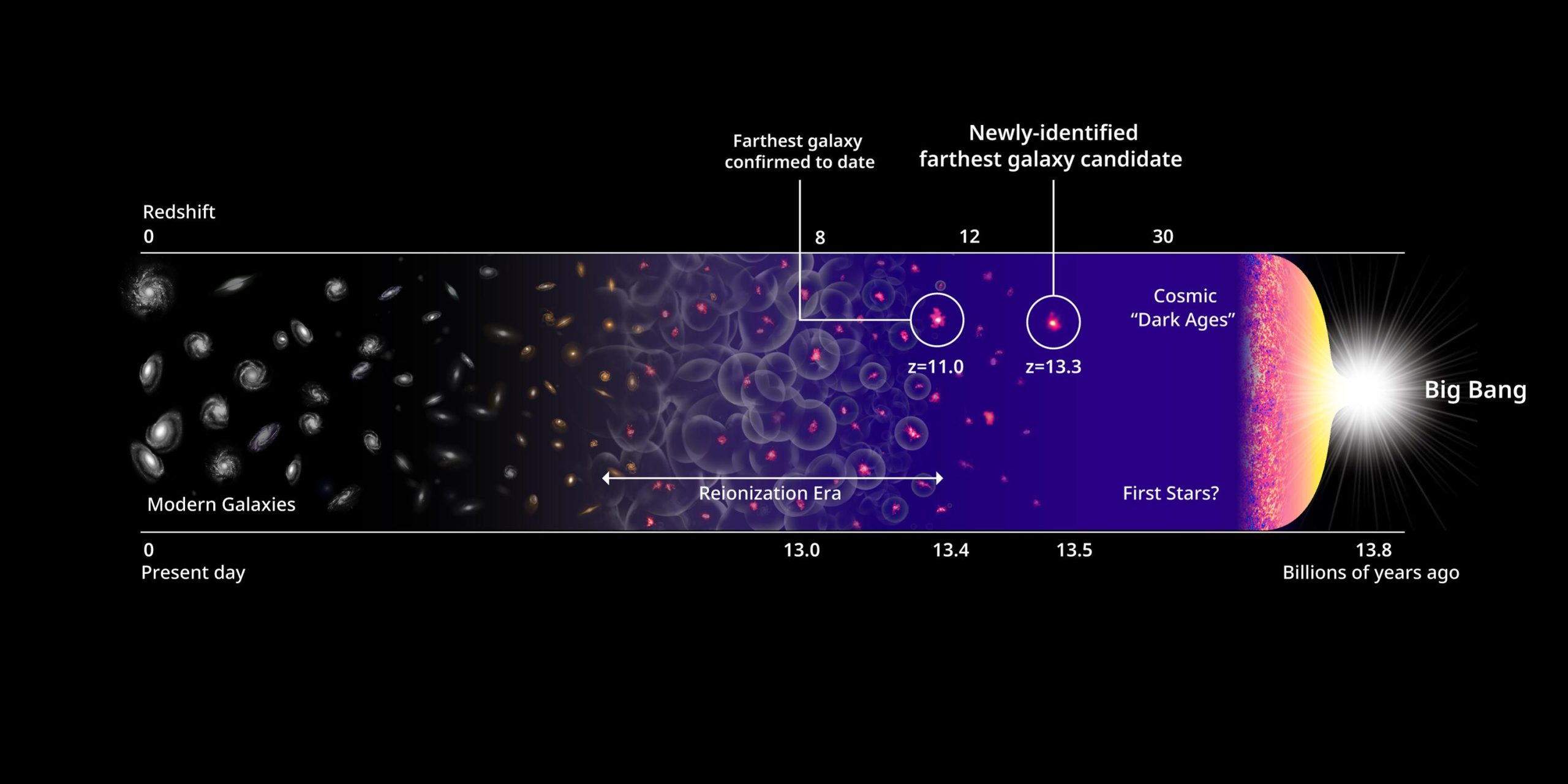
Before a sufficient number of stars form, neutral atoms persist in the intergalactic medium of the Universe, where they are remarkably efficient at blocking ultraviolet and visible light starlight. Without spectroscopic confirmation, like we have for GN-z11 but not HD1, caution should be warranted.
This is consistent with an object behind the “wall of neutral atoms” prior to reionization.

Schematic diagram of the Universe’s history, highlighting reionization. Before stars or galaxies formed, the Universe was full of light-blocking, neutral atoms. Most of the Universe doesn’t become reionized until 550 million years afterwards, with some regions achieving full reionization earlier and others later. The first major waves of reionization begin happening at around 250 million years of age, while a few fortunate stars may form just 50-to-100 million years after the Big Bang. With the right tools, like the James Webb Space Telescope, we may begin to reveal the earliest galaxies.
But only spectroscopy can determine a galaxy’s redshift with absolute certainty.
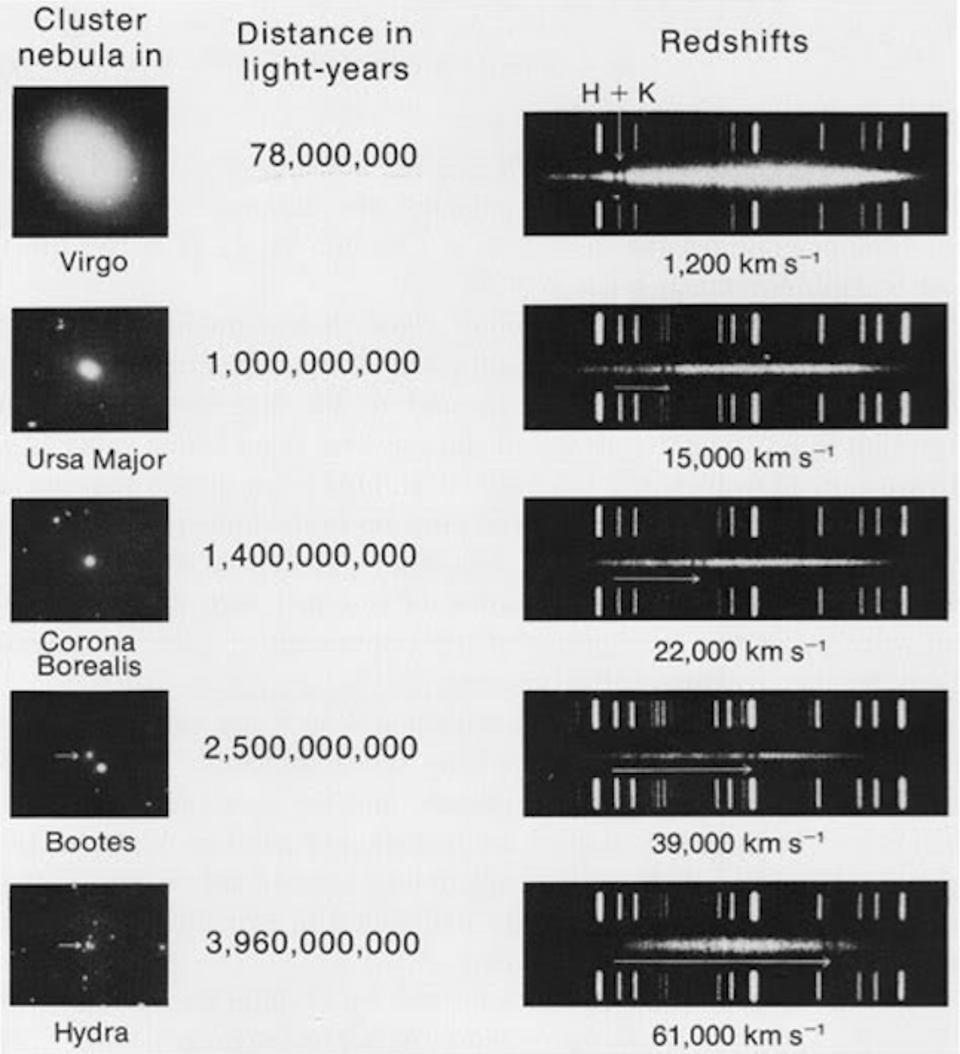
Only by breaking the light from a distant object up into its component wavelengths and by identifying the signature of atomic or ionic electron transitions that can be linked to a redshift, and hence, the expanding Universe, can a confident redshift (and hence, distance) be arrived at. That evidence is lacking for HD1 and HD2 today.
Multiple spectral lines, linked to quantum transitions, reveal how severely emitted light is redshifted by the expanding Universe.
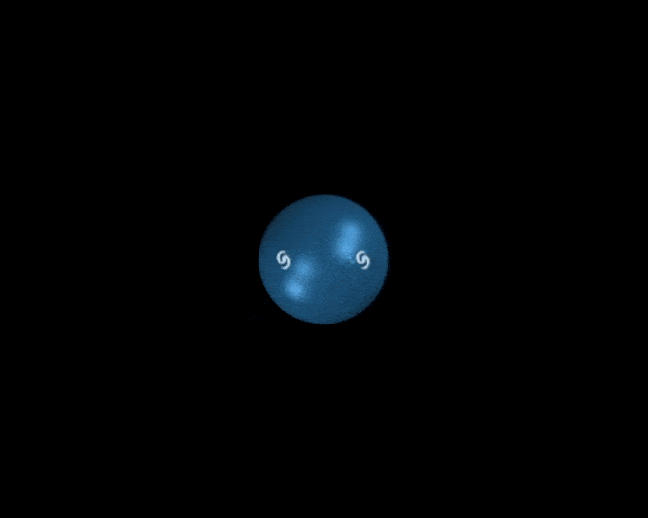
This simplified animation shows how light redshifts and how distances between unbound objects change over time in the expanding Universe. Only by linking the wavelength of the emitted light to the observed light can the redshift truly be measured with confidence.
For HD1, only one candidate line exists, and its detection significance is below the 5-σ threshold.
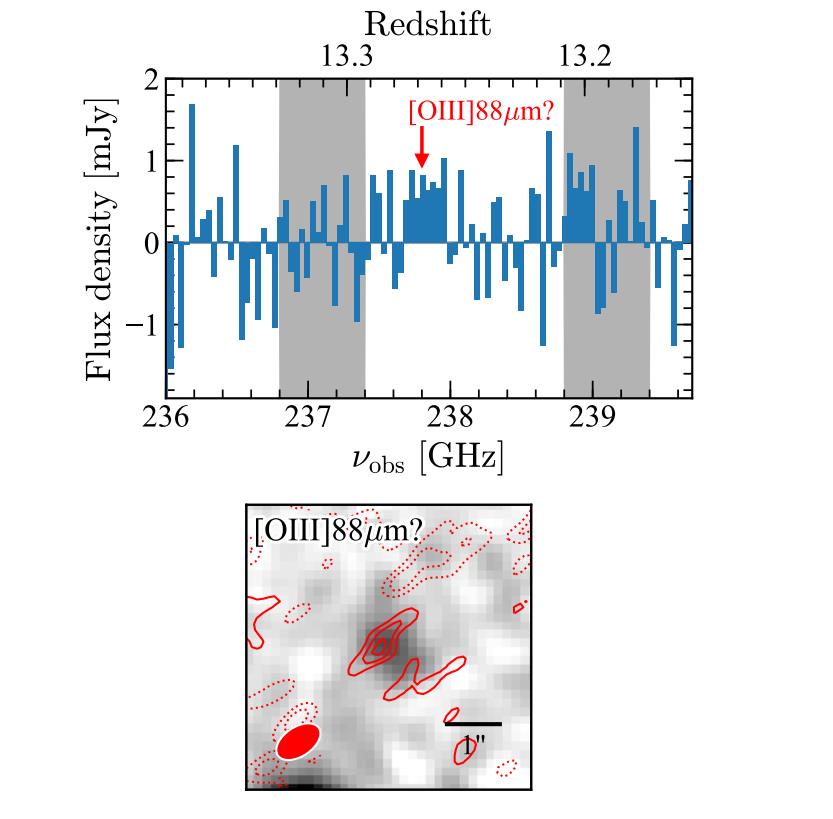
In the entirety of the spectra taken by our most powerful observatories, including ALMA, of galaxy HD1, only one tentative signature for a line emerges: for a doubly-ionized oxygen line. Its confidence does not rise to the “gold standard” required to announce a discovery.
The “other” distant candidate, HD2, possesses no spectral lines at all.
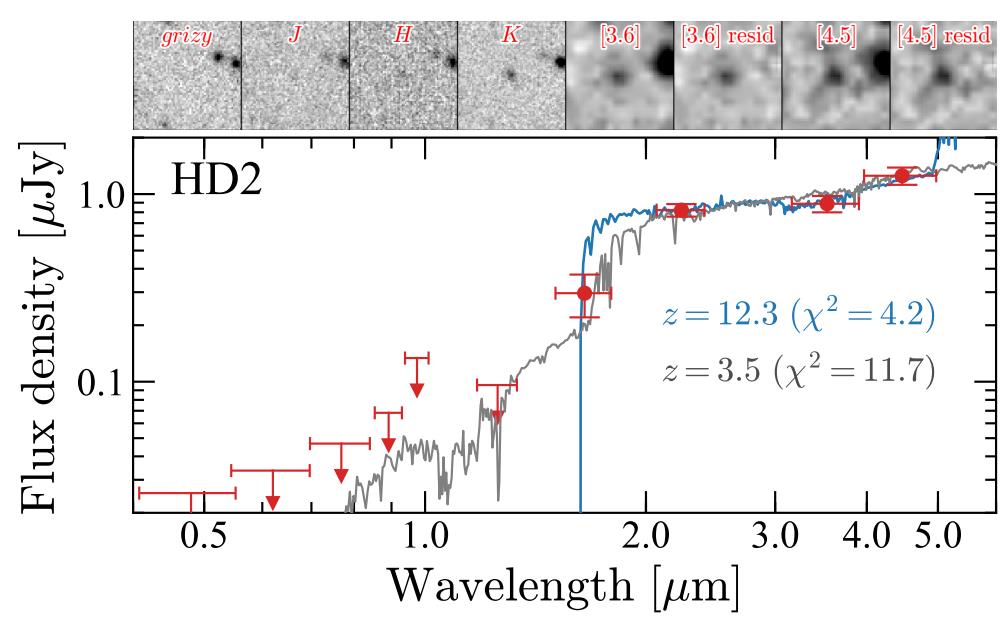
The exposures in different photometric bands (top) of candidate galaxy HD2, along with two possible spectral fits (curves) to the data points (red). Note how although a high redshift (z = 12) solution is favored over a low redshift (z = 3.5) interpretation, both are possible, and the unambiguous signature from spectroscopy is not available.
Until spectroscopic confirmation arrives, caution is mandated, as no distances can be decisively determined.
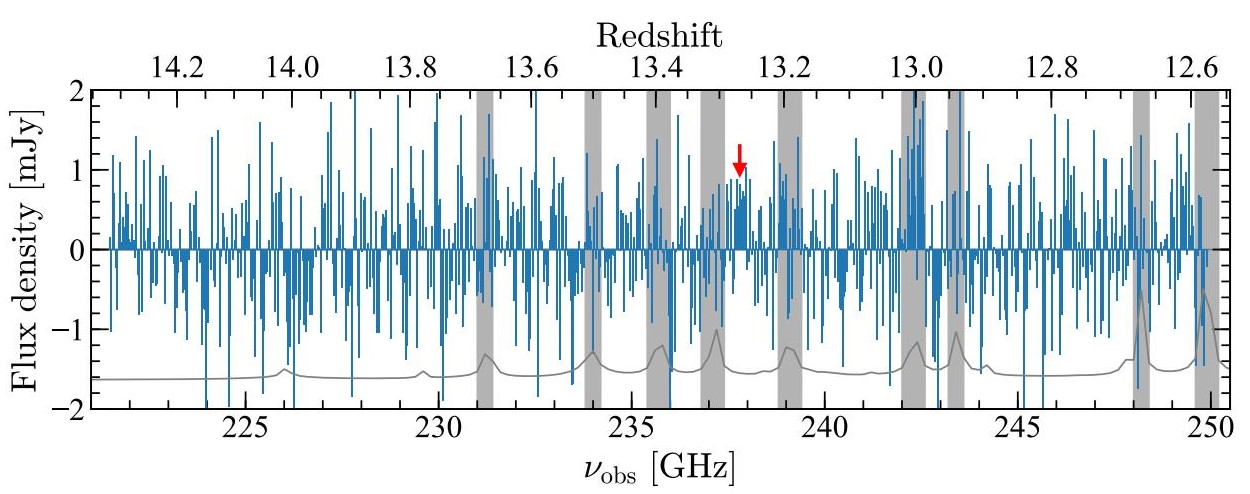
The full published spectrum of candidate galaxy HD1 shows no definitive spectral line detections at all. The red arrow corresponds to the candidate signal of a doubly ionized oxygen line. Without decisive data, we cannot responsibly conclude that this is, in fact, the farthest galaxy we’ve ever seen. It might not be anything like that at all.
Mostly Mute Monday tells an astronomical story in images, visuals, and no more than 200 words. Talk less; smile more.
Read More: “Farthest galaxy ever” HD1 is probably not what it seems

